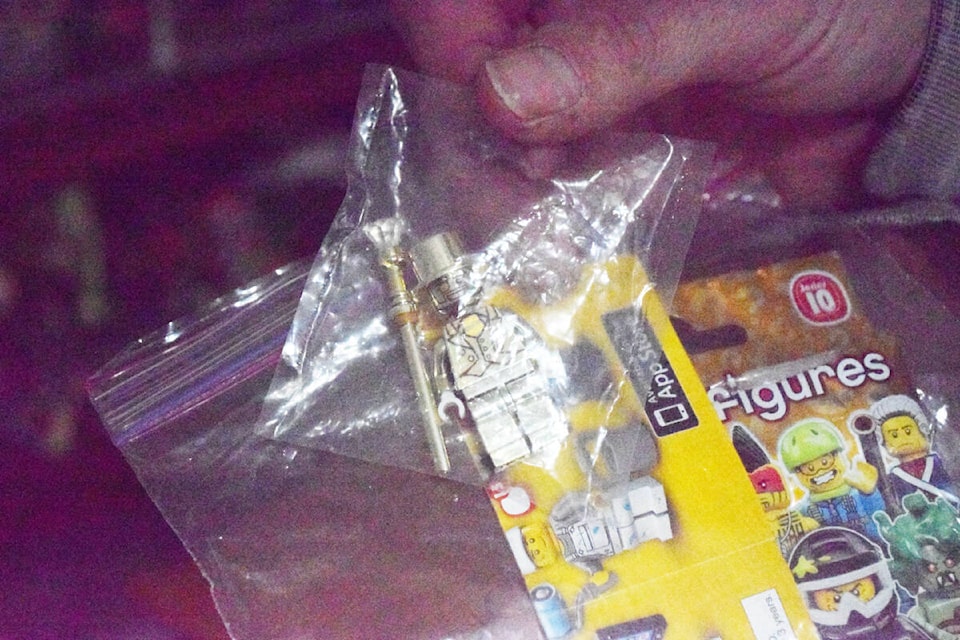When he was young, Matthew Fox of Black Creek imagined he’d become an engineer, which may be behind his love for working with Lego.
The 49-year-old Baptist pastor can remember the first time he opened a box containing those multi-colored piece of plastic brick.
“I saw a Space Lego kit,” Fox recalls. “That just caught my eye. I begged and begged my parents to buy it but they just couldn’t afford it. So my grandparents bought it for me. I haven’t looked back.”
READ MORE: Campbell River entrepreneurs examine a collaborative approach to ‘office work’
Giving up the hobby in his teens, he picked up the idea of investing in Lego in his 20s. He estimates he’s been wheeling and dealing Lego kits on a regular basis for about 15 years. He shows his prized piece: A gold plated “Mr. Gold” Lego figure, which Fox is selling for $7,000 in order to help pay for a new home for his family of nine. Lego only produced 5,000 Mr. Gold, of which Fox got his hands on a few.
“I had a hunch that these were going to be worth something,” said Fox. “I bought two from Toronto, two off of eBay and just held onto them. I’ve needed money over the years, as my hobby has cost a lot. So I’ve sold them off. This is my last one. Building a new house, I don’t want to get rid of him but need some insulation.”
The building block toy was created in 1932 by Danish carpenter Ole Kirk Christensen, and has seen significant exposure as an investment over the past decade. Anchored by secondary market from auction sites like eBay and the ongoing discontinuity of sets, some have skyrocketed in price.
For example, a kit featuring the inside of the palace of Jabba the Hutt, from the Star Wars films, sold at retail for $10 when it was released in 2003; 20 years later, it’s worth over $200, an annual value growth of nearly 13 per cent, according to website BrickEconomy.
“The biggest thing about Lego investment is the scarcity. It does not flood the market,” said Luke Strauer, co-founder of Brickfact, a Lego enthusiast website. “Millennials are able and willing to spend money on these nostalgic things. They get reminded of its value by having children. Unlike commodities such as gold, Lego still has a real value if you play with it or display it.”
But before you go digging into your toy box to find your old Lego pieces, some business-minded individuals state that just like commodities, collectables can be a risk, albeit with a little less volatility.
“The money supply within the world has gotten larger,” says Mia Maki, Associate Dean of the Peter G. Gustavson School of Business at the University of Victoria. “Lego is a collectable, and if you are passionate about Lego you may or may not invest in it. But it may or may not appreciate in value, based on a multitude of factors such as whether or not investors may continue to be interested or engaged within the market.”
“There are different asset classes. If you invest in stocks, then that’s what you invest in; if you invest in bonds, you invest in bonds. If you’re investing in Lego, you’re investing in a children’s toy,” said Maki.
That doesn’t seem to bother Fox, a father of seven, who has held onto that passion from childhood, and instilled it into his children as well.
“One of the geniuses of Lego is that Lego IS cool,” said Fox. “Each of my kids have kind of found their niche and what they like. It’s fun and encouraging and you can get your kids off a screen and build some lego. And you can be a part of that too.”
Edward Hitchins
edward.hitchins@campbellrivermirror.com
Like us on Facebook and follow us on Twitter



